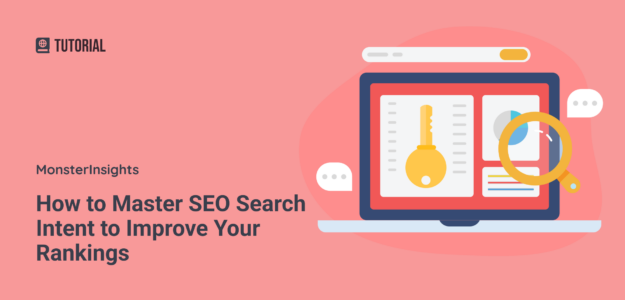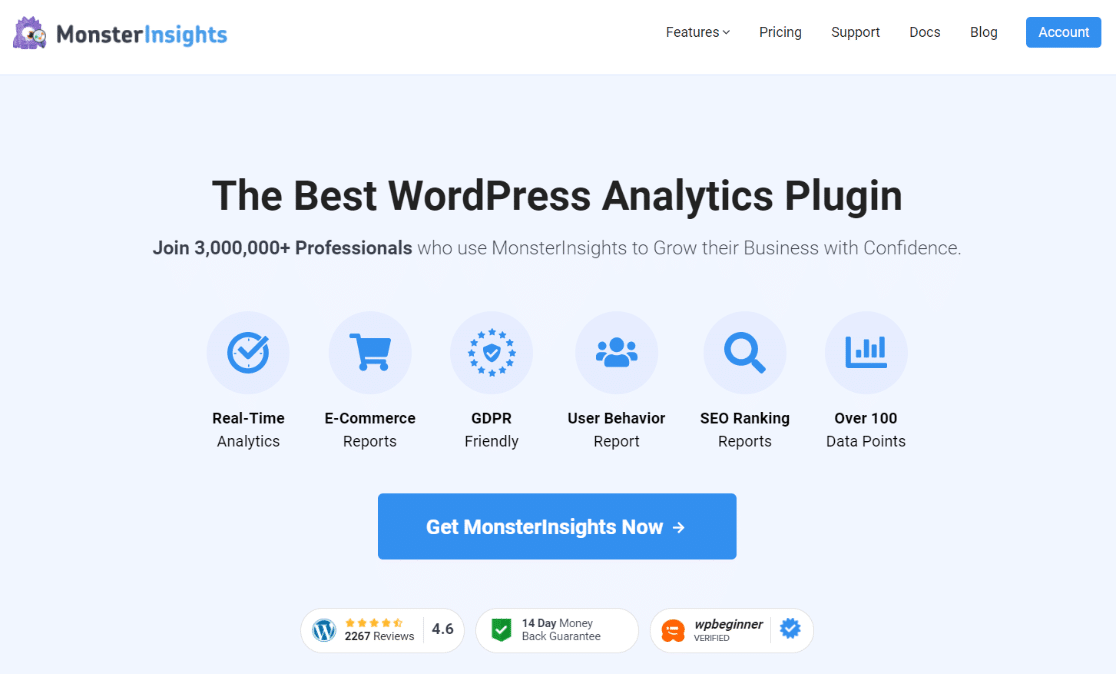Are you looking to master SEO search intent to enhance your SEO efforts, rank higher in search results, and attract more visitors to your website?
Understanding SEO search intent is crucial because search engines use it to assess the relevance and quality of your pages. When your content closely matches the intent behind users’ searches, it is more likely to rank higher, as search engines see your content as a better fit for the search query.
In this article, we’ll break down the basics of SEO search intent, explore different types, and provide practical steps to help you align your content to rock your SEO.
Here’s what we’ll cover:
- What Is SEO Search Intent?
- Why SEO Search Intent Is Important
- Exploring the Four Main Types of Search Intent
- Strategies to Identify and Match Search Intent
- How to Track SEO Performance
- Frequently Asked Questions
What Is SEO Search Intent?
SEO search intent, or SEO user intent, is all about determining why someone is looking something up on the internet. It helps us understand what the person is hoping to find or do when they type in their search.
For example, if someone searches for ‘summer vacation destinations,’ they’re probably looking for cool ideas and info but aren’t ready to make a booking.
Search engines try to match search results with the intent behind the search queries. So, search engines will boost rankings if your content aligns well with what searchers seek.
On the other hand, if someone searches for ‘how to change a tire’ and finds a page that mostly tries to sell tires instead of showing how to change one, it doesn’t really help them with what they need. Search engines like Google can tell when a page isn’t giving searchers the help they’re looking for, and they’ll lower that page’s ranking because of it.
Understanding search intent is like having a superpower. You can refine your content to better align with the user’s needs, boosting your site’s relevancy and SEO.
If you want to learn more about how search engines rank your site, check out Google’s ranking factors.
Why SEO Search Intent Is Important
Mastering search intent is super important in SEO because it directly affects how well your content performs in search rankings.
Search engines like Google focus on giving users the most relevant answers to their questions. Their main job is to ensure you quickly find exactly what you need when you type something in and hit ‘enter.’
For example, if someone searches for ‘best skis for off-piste,’ they’re usually not ready to buy right away from a specific brand. Instead, they’re looking for helpful guides, detailed reviews, and discussions to help them decide which skis are best.
That’s why the search results for this kind of query will show lists of the top ski models, in-depth reviews, and forum discussions about off-piste skis.
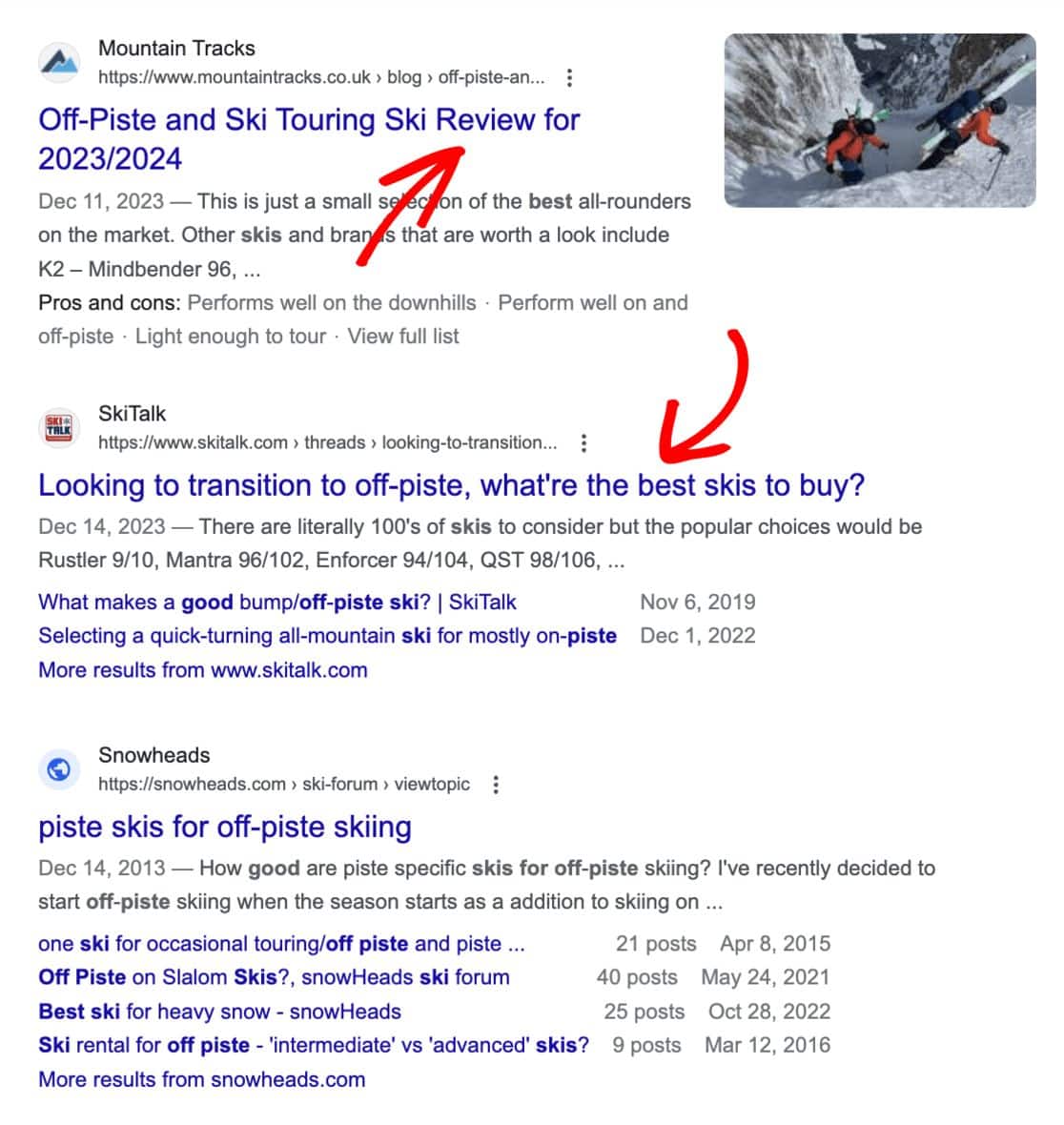
This is because these types of results match the needs of the searcher: to find information about and compare skis.
If your page does not satisfy the search intent, even with traditional and solid SEO practices in place, it won’t rank well.
But the cool thing is that it works in reverse as well.
So, when you nail SEO search intent, you’ll improve your website’s visibility and rankings in search results, fundamentally boosting your site’s performance.
Exploring the Four Main Types of Search Intent
Now, let’s take a look at the four main types of search intent.
Each type of search intent matches users’ needs or goals. By making your content fit these needs, you can reach more people and improve its effectiveness.
1. Navigational Intent
Navigational intent means that users are looking for a specific website or page. They know exactly where they want to go and use the search engine to get there fast.
Examples:
-
- Facebook login
- OpenAI blog
- Starbucks near me
2. Informational Intent
Informational intent means the user is looking for information. People might ask a direct question or search for a general topic they want to know more about.
Examples:
-
- How to bake a chocolate cake?
- Symptoms of the flu
- History of the Roman Empire
3. Commercial Intent
Commercial intent searches are those where the user is considering a purchase and wants to research options and reviews before making a final decision.
Examples:
-
- Best smartphones for taking photos
- Top-rated electric toothbrushes
- Sony camera review
4. Transactional Intent
Transactional intent means the person searching wants to perform an online activity, such as buying something or signing up for a service. Their goal is to take action, not just get information.
Examples:
-
- Buy iPhone 14
- Netflix subscription trial
- Download Adobe Photoshop
When people search online with different intents, whether they want information or to perform an action, it’s an opportunity for you as a business to connect with your audience.
While informational content is great for answering questions and building trust, don’t overlook the power of commercial and transactional keywords.
By including commercial keywords in your strategy, where you answer questions about products and services, you provide valuable content that helps users make informed decisions.
When someone searches for something like ‘buy organic coffee beans’ or ‘affordable yoga mats online,’ it means they are ready to make a purchase. And for you as a business, these types of searches present great opportunities to make a sale.
You should use a good mix of informational, commercial, and transactional keywords. This lets you connect with potential customers at different stages – whether they want info or are ready to buy.
Having this variety of keywords guides customers through the entire purchasing journey, enhancing their experience. And ultimately, covering all the user intents helps increase conversion rates.
Strategies to Identify and Match Search Intent
Let’s examine some strategies for identifying the user’s search intent and look at how you can implement them to meet their expectations.
1. Optimizing Content for Search Intent
The first step in aligning your content with user intent is to conduct deep research on the search query and keyword.
Start by exploring the keyword and observing the top-ranking pages on search engines. This is an important step because if all the top results share a standard format, like list-type posts, that’s a strong signal of what search engines and users expect to see for that query.
If you notice that these lists usually include around ten items, aim to match or exceed this number to compete with the content already ranking.
As you analyze these top-ranking articles, pay attention to their categories and topics.
For example, if you’re writing about the ‘best outdoor BBQ grills’ and you see that most articles include sections on both charcoal and electric grills, you should consider doing the same.
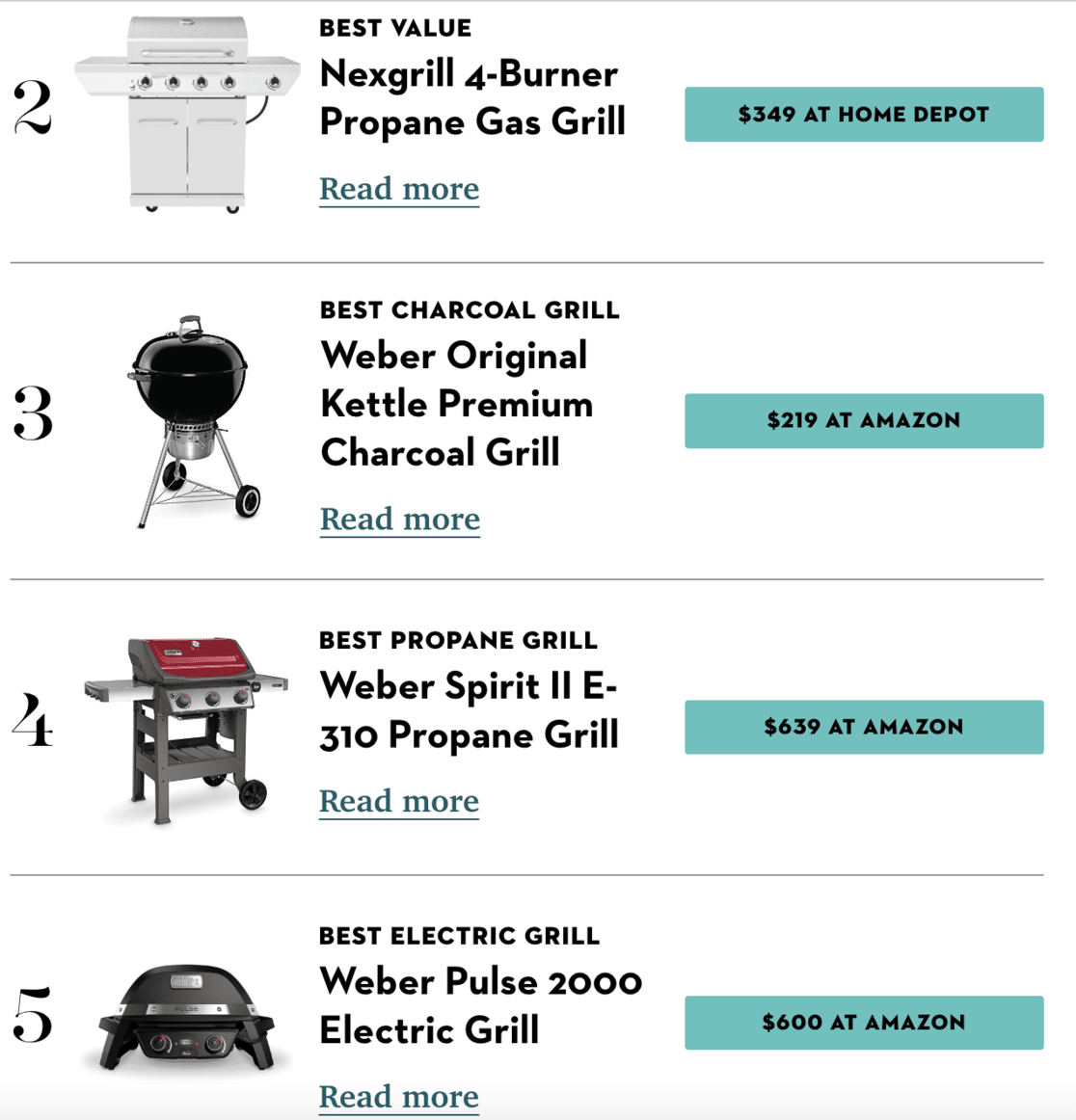
This approach allows you to meet the same expectations that those leading posts have already set.
But it’s not just about matching content types and categories; how you structure your content is equally important.
Ensure your article is well-organized, with clear headings guiding the reader through each section. A good structure improves readability and makes it easier for search engines to understand and rank your content.
Improving user experience is another important element. Your content should be easy to navigate, with a layout that lets users find exactly what they need without hassle. This means effectively using headings, breaking up text into easy-to-read sections, and ensuring your site is accessible to all users.
A good user experience keeps people on your page longer, reducing bounce rates and increasing the chances of conversion.
2. Tools for Determining SEO Search Intent
When it comes to determining SEO search intent, there are different tools you can use to make the process simpler and more effective.
Keyword research tools are handy; they show you the top-ranking results and word counts, and some can even pinpoint the search intent behind each keyword.
For instance, tools like Semrush offer a feature that indicates the search intent when you search for the keyword.
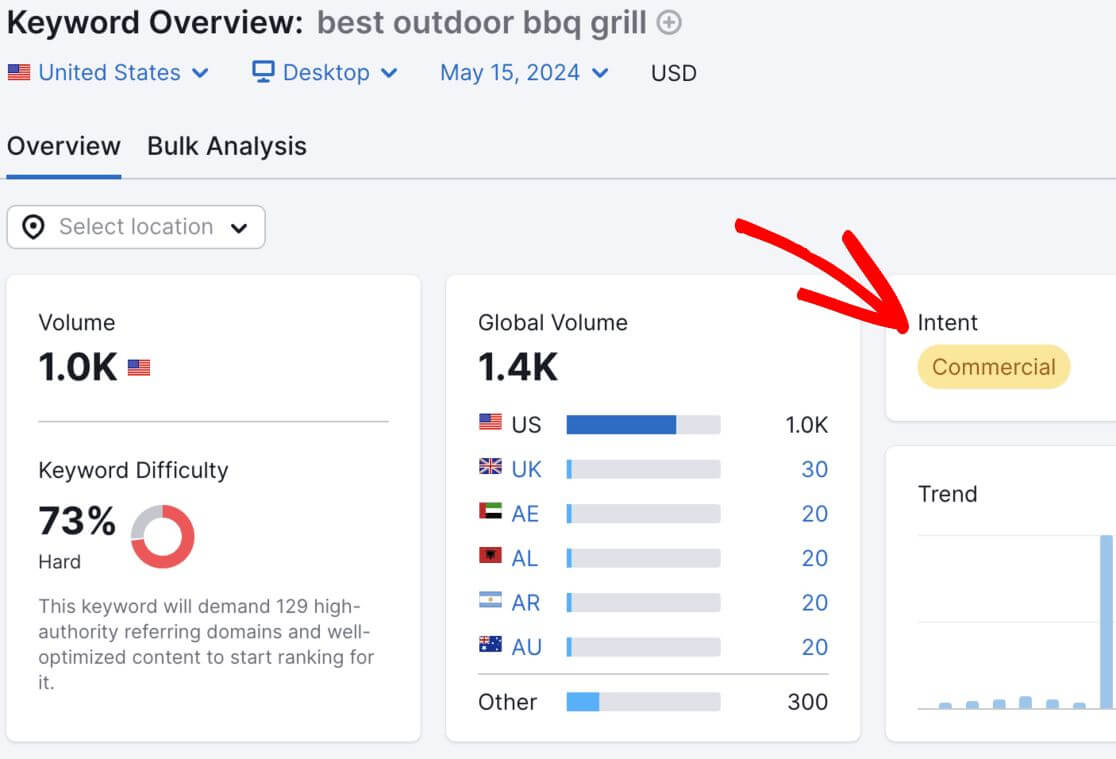
This can be incredibly helpful in quickly understanding whether a keyword is primarily used for informational, navigational, commercial, or transactional purposes.
Another handy and free SEO tool is alsoasked.com, which provides insights into people’s questions related to your topic.

This gives you a deeper understanding of the user’s intent and helps you create content that answers those questions directly, making your content more relevant and authoritative in the eyes of search engines.
Don’t forget to utilize the ‘Related searches’ section at the bottom of Google’s search pages.
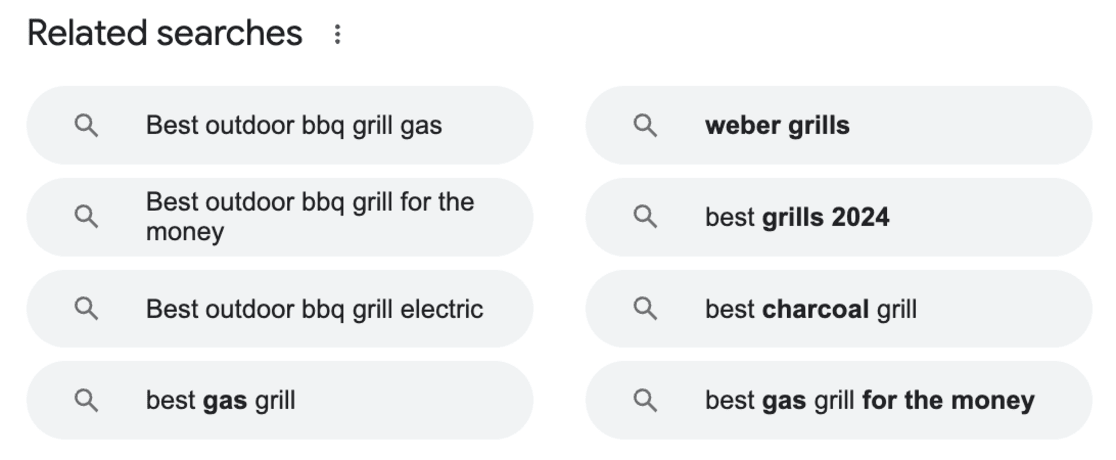
This section is a free goldmine for discovering what other related topics or queries users are searching for.
By taking advantage of these tools, you can gain a comprehensive view of search intent instead of just guessing based on the keywords. This strategic approach helps ensure that your content meets user needs and is optimized for search engines, boosting your rankings and attracting more visitors.
How to Track SEO Performance
Now that you know how to optimize your website for search intent, it’s important to keep tracking its search performance. By monitoring how your pages rank and get traffic from searches, you can make smart decisions to improve your overall SEO strategy.
Let’s look at the best ways to track your SEO performance.
For WordPress Users: MonsterInsights
If you’re using WordPress, MonsterInsights is the best tool. As the leading Google Analytics plugin for WordPress, MonsterInsights simplifies integrating your site with Google Analytics.
This lets you view the most valuable reports directly from your WordPress dashboard, eliminating the need to go through Google Analytics separately.
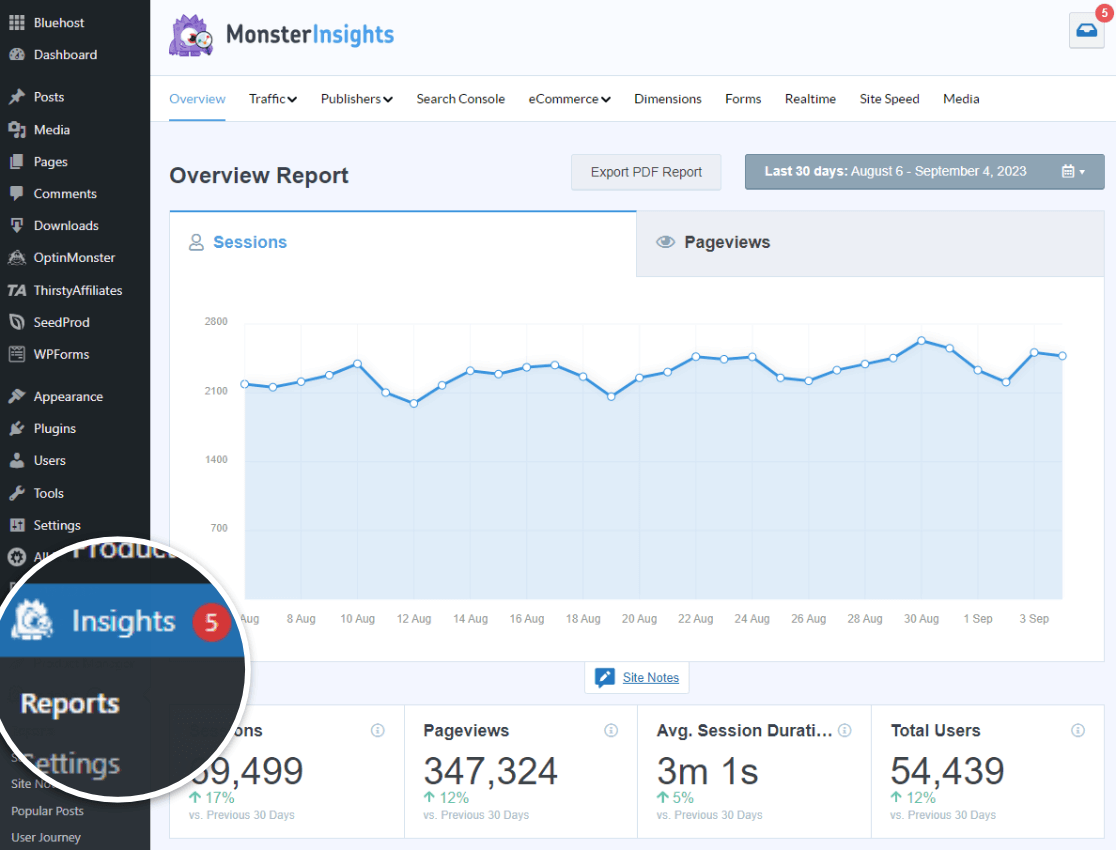
MonsterInsights provides comprehensive reports tailored to your needs, such as real-time analytics, bounce rate, eCommerce analytics, site speed evaluations, and SEO KPIs like keyword rankings.
MonsterInsights is particularly user-friendly because it effortlessly enables advanced tracking features. With just a few clicks, you can track form submissions, author views, outbound link clicks, and WooCommerce activities.
The plugin includes a Search Console Report that shows your top 50 Google search terms directly in your dashboard.
This report displays clicks and impressions for each keyword and provides the click-through rate (CTR) and average ranking position.
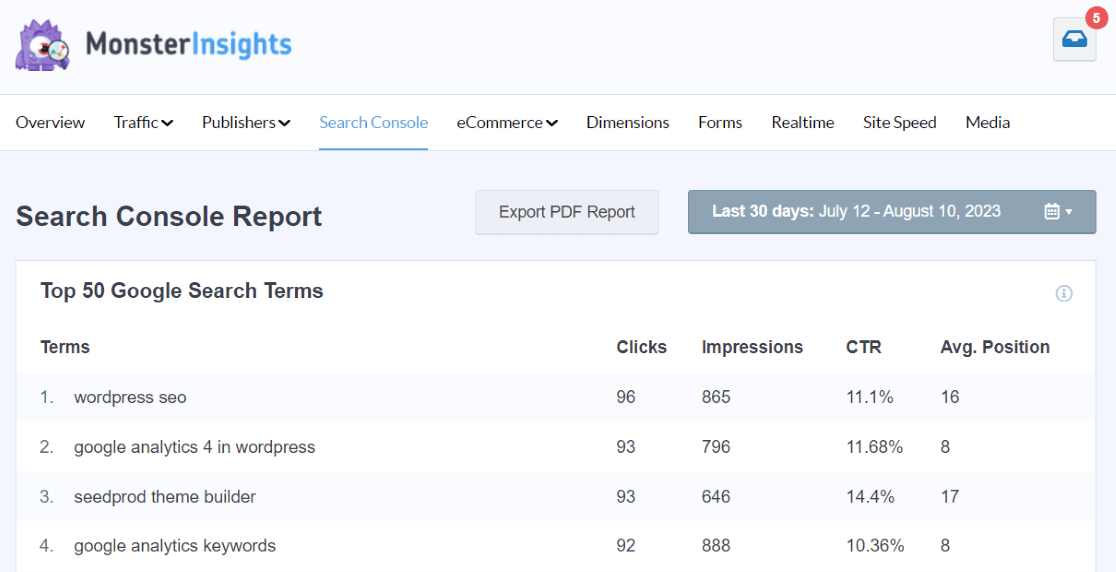
This feature is invaluable for monitoring which keywords are performing well and which need more attention to improve your CTR and rankings.
MonsterInsights also lets you set up focus keyword tracking to monitor your rankings easily.
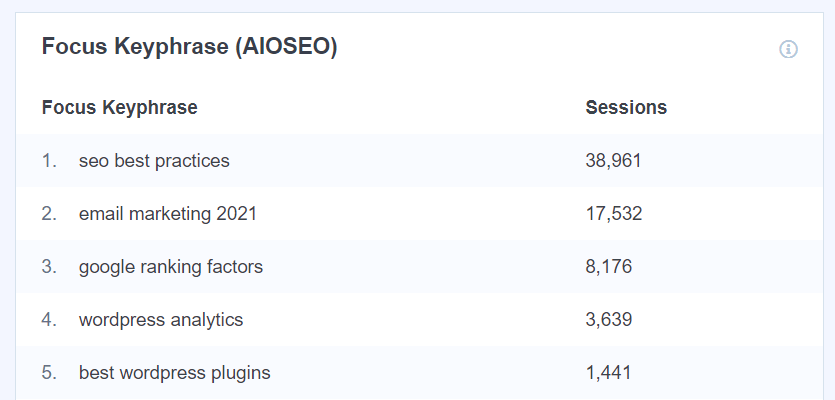
For Non-WordPress Users: Google Analytics and Google Search Console
The combination of Google Analytics and Google Search Console is pretty effective for those not using WordPress.
These tools provide good information about your website’s performance, including insights into ranking keywords, user behavior, impressions, CTR, and more.
Google Analytics provides detailed tracking of SEO performance, and you can create custom reports to customize your data.
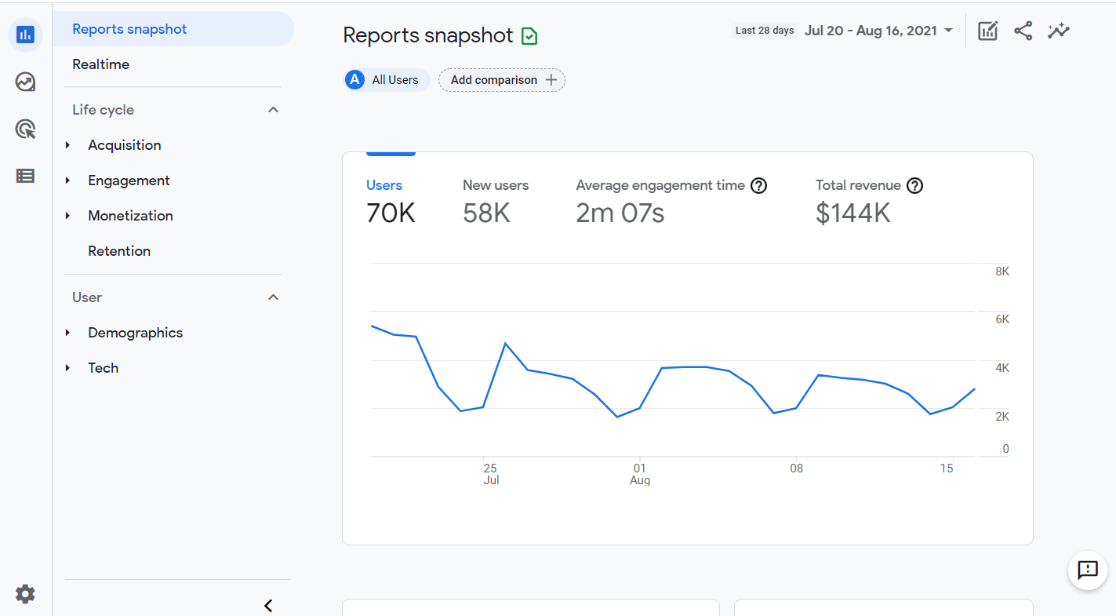
Meanwhile, Google Search Console offers in-depth insights into how your site appears in search results, helping you understand what works and what might need tweaking.
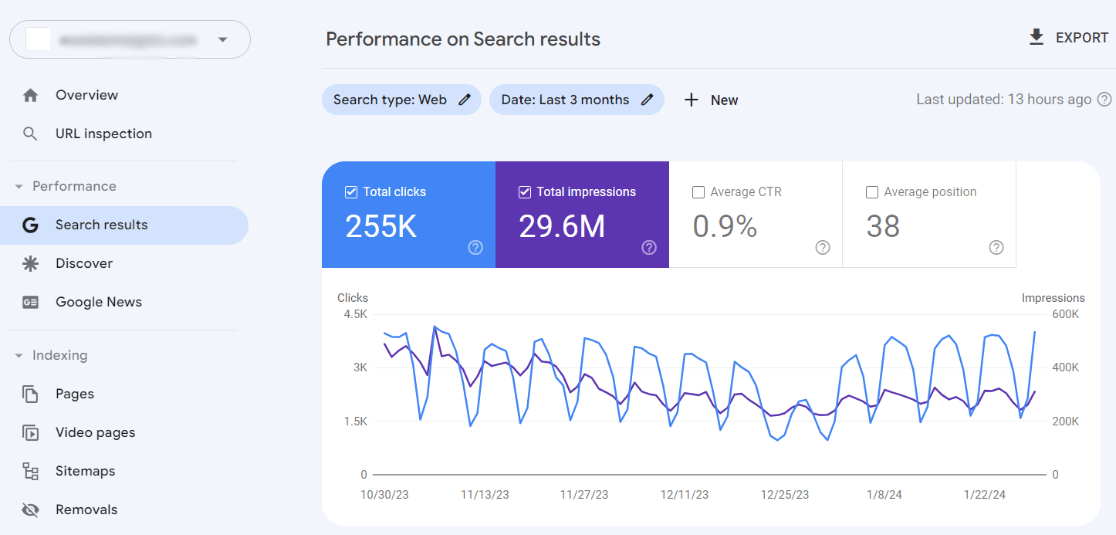
Frequently Asked Questions
What is search intent in SEO?
Search intent in SEO refers to why someone conducts a specific search query, focusing on their underlying goal or need.
Why is it important to consider search intent when doing SEO?
Considering search intent is crucial because it helps create content that aligns with user expectations and needs, improving rankings and user satisfaction.
What are the four search intents?
The four primary search intents are informational, navigational, commercial, and transactional, each representing different user goals.
What is the difference between search intent and user intent?
There is no difference between search and user intent; both terms are used to describe the purpose behind a user’s search query.
And that’s it!
We hope you liked this article and guide on SEO search intent. If you found it helpful, maybe you’d like to read:
- 49 Powerful SEO Statistics to Boost Your Rankings
- 8 Proven Ways to Increase User Engagement on Your Website
- How to Increase Organic Traffic (12 Best Ways)
- WordPress SEO Checklist: 17 Simple Steps
Not a user of MonsterInsights yet? Get started today!
And don’t forget to follow us on X, Facebook, and YouTube for more helpful SEO, website, and Google Analytics tips.
